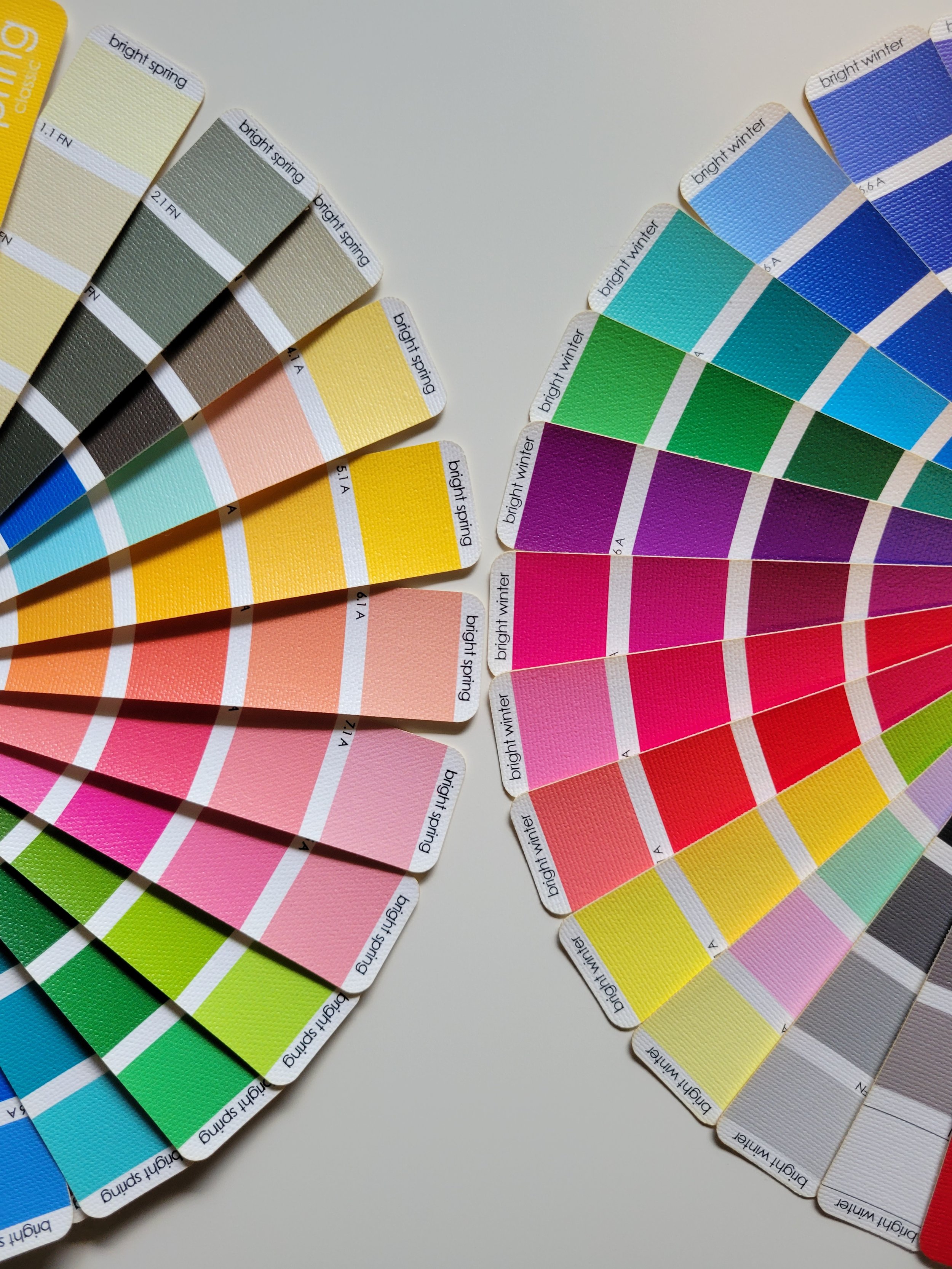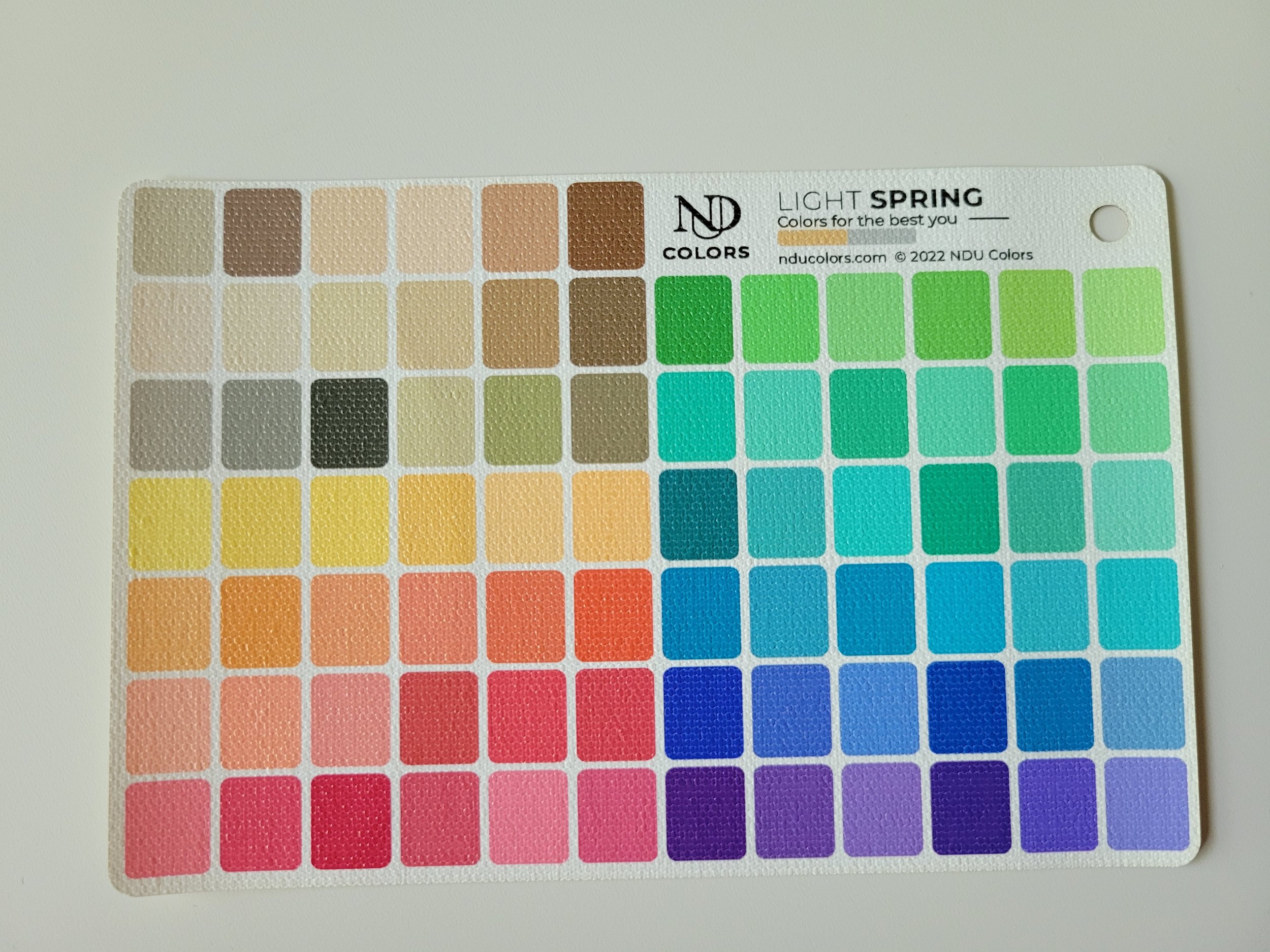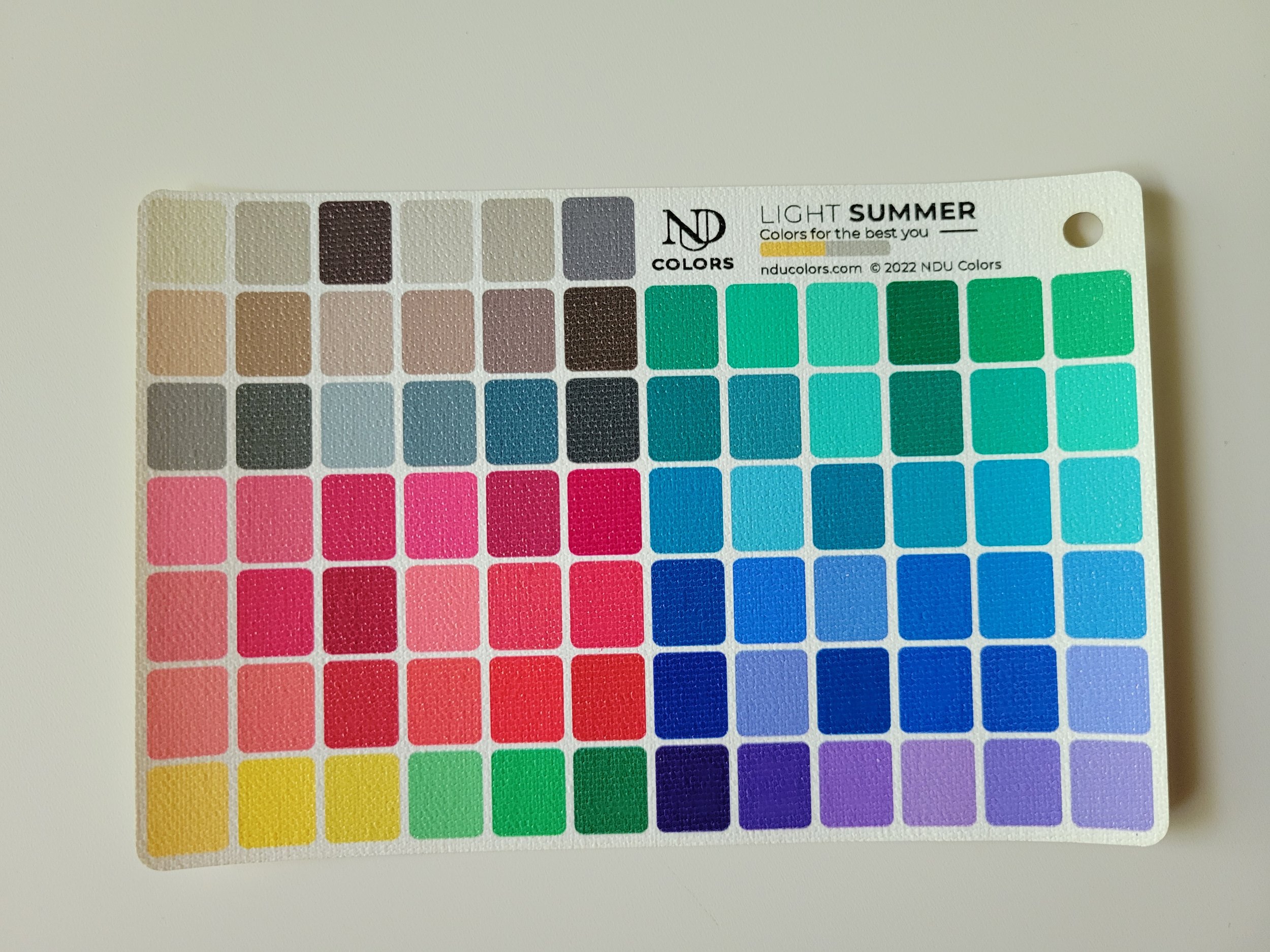I get so many questions about these two seasons that I’m surprised they weren’t the most-requested comparison right out of the gate!
First, let’s explore their technical parameters:
Bright Winter and Bright Spring are both situated between True Winter and True Spring on the seasonal color clock, meaning that they’re both blends of True Winter (cool, saturated, high contrast) and True Spring (warm, saturated, medium contrast).
Bright Winter is based in True Winter, with a dash of True Spring’s juicy warmth. Bright Winter is a Cool-Neutral season. Colors are bright and electric.
Bright Spring is based in True Spring, with a dash of True Winter’s icy intensity. Bright Spring is a Warm-Neutral season. Colors are fresh and tropical.
Brightness is the most important characteristic of these two seasons. Soft, muted colors will disappear or look dusty on both of the Brights, particularly in makeup. At the same time, rich, dark colors can feel heavy.
Aside from temperature, one main difference between these two seasons is that Bright Winter is darker and more high contrast than Bright Spring.
What happens when a Bright Winter wears Bright Spring colors?
A Bright Winter wearing Bright Spring clothing or makeup will often find her skin looking more orange or yellow than it really is. The eyes can lose color and sparkle, and the skin can take on a slightly greasy look. Bright Spring makeup will usually look noticeably too orange or coral, with an overall effect that can come off as slightly childish.
What happens when a Bright Spring wears Bright Winter colors?
A Bright Spring wearing Bright Winter clothing or makeup will often find her skin looking more ashen than it really is. Many Bright Springs notice an artificial “mustache” in Bright Winter due to shadowing, particularly in too-dark or too-cool Bright Winter lipstick. The eyes can appear slightly red and watery, and the overall effect can come off as strained or hard.
How do each of the Brights wear their makeup?
Both of the Bright seasons are flattered by shiny, sparkly, or translucent effects. Bright Winter has a little more wiggle room with matte textures, while Bright Spring has a little more wiggle room with dewy textures.
Bright Winter is flattered by crisp and clean makeup, and many Bright Winters prefer minimal eye makeup, with high-contrast blush and lipstick. Eye makeup shouldn’t be overly dark or smoky, but a retro eyeliner style can be very flattering. Eyeshadows like Colourpop Uh Oh and Colourpop I Heart This are stunning, along with eyeliners like Lancôme Black Coffee and Moira Beauty Sapphire Blue. For cheeks, fuchsia and cool hot pinks like MAC Full Fuchsia and Surratt Classique. For lips, intense fuchsias are a popular choice, like Revlon Fuchsia Fusion or Maybelline Fuchsia For Me, as well as clear cherry reds like Dior Red Smile.
Bright Spring is flattered by fresh and sunny makeup, with many Bright Springs appreciating a dewy look, or even over-the-top shine via highlighter. Too-dark eyeshadows and liners can look heavy on the Bright Spring face, but colorful ones can look surprisingly normal. Peachy eyeshadows like MAC Orb and Stila Kitten are perfect, along with eyeliners like Moira Beauty Soft Gold and Hourglass Meteorite. For cheeks, bright strawberry pinks and corals like Benefit Crystah and Moira I Adore You are gorgeous, and for highlighters, look at Colourpop Lunch Money or Moira Bubbly Champagne. For lips, warm hot pinks and pinky-corals, like Dior Lucky and L’Oreal Raspberry Rush.
Can these two seasons “cheat” with some of the same colors?
Technically speaking, colors belong to one palette or the other, but in real life, they may borrow from each other occasionally. The success of this can depend on the size of the piece (an earring, vs a sweater, vs a shoe), where on the body the color is worn, and the individual in question. These two seasons don’t tend to share a lot of makeup shades, but there are always exceptions. Eyeshadow and eyeliner are somewhat malleable due to differences in blending and application style, and of course, every individual may have a different sweet spot in her season.
If you’d like to explore these two seasons further, check out my Pinterest boards:




